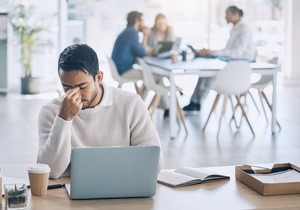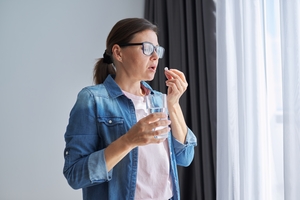Body Contouring
Body contouring refers to a group of treatments that may improve your silhouette after excess weight loss. Knowing more about body contouring treatments and how they work can help you choose the right skin care doctor when you’re ready to enhance your appearance.
Nonsurgical body contouring
Also known as body sculpting, body contouring refers to treatments that focus on reducing pockets of excess fat and skin that don’t respond to diet and exercise. According to the American Society of Plastic Surgeons (ASPS), these cosmetic procedures are usually performed to remove excess fat and skin after losing a significant amount of weight.
Nonsurgical body contouring treatments refer to body contouring treatments that are minimally invasive or noninvasive and that require no cutting or incisions. Many of these treatments are shown to produce fewer side effects than their surgical counterparts and less downtime, and a faster recovery, according to ASPS.
What is nonsurgical body sculpting?
Nonsurgical body sculpting helps you achieve a slimmer, smoother silhouette without surgery. The top benefits of nonsurgical body sculpting, according to the ASPS, include natural-looking results, short treatment sessions, minimal recovery time, and little to no pain. A dermatologist or skin care doctor often performs these less-invasive treatments in an outpatient setting.
How does nonsurgical body sculpting work?
Each nonsurgical body sculpting treatment works differently than the next based on the procedure you choose. For example, some fat removal techniques involve freezing and destroying fat cells, while others break down fat tissues using controlled heat, reports the American Board of Cosmetic Surgery (ABCS). Other techniques involve light therapy and injections that break down fat cells. Your dermatologist can discuss all your available body contouring options based on your treatment goals and the areas you want to be treated.
Cryolipolysis
This non-invasive body contouring method reduces pockets of fat by freezing and destroying fat cells while leaving surrounding tissue unharmed. Cryolipolysis can be used to reduce unwanted fat on the abdomen, hips, back, upper arms, thighs, under the buttocks, and under the chin, reports ABCS.
According to the ABCS, cryolipolysis is ideal for those who want to reduce the size of a fat bulge while also reshaping the area. Each treatment takes about 35 to 60 minutes to perform, and only one to two treatment sessions are needed to achieve desired results. The ABCS adds that common side effects of cryolipolysis include mild swelling, redness, numbness, and tingling.
Laser lipolysis
Laser lipolysis is a non-invasive body sculpting treatment that uses a laser wavelength to heat and break down fat cells without damaging the skin in the process. It is mainly used to reduce unwanted fat in the abdomen and flanks, though it may also be used in other areas. The ABCS says treatments typically last about 25 minutes per area, and results are most noticeable after about 12 weeks.
Radiofrequency lipolysis
This fat reduction method uses radiofrequency energy to heat and destroy fat cells without affecting the skin or other nearby cells. According to the ASPS, radiofrequency lipolysis can reduce bulges of fat anywhere in the body. It is another non-invasive body contouring treatment that can be done without anesthesia, and that produces no downtime.
The ASPS adds that radiofrequency lipolysis takes about 30 minutes to perform once a week for at least four weeks to produce results.
Injection lipolysis
This injectable body contouring treatment uses deoxycholic acid to break down fat cells. According to the ABCS, injection lipolysis is effective at reducing excess fat below the chin, often known as a “double chin.” It adds that each injection takes about 20 minutes to perform, and between two and four treatments are needed to achieve optimal results. Common side effects of injection lipolysis include mild swelling, redness, numbness, and bruising at the injection site.
Non-surgical body contouring compared to liposuction
Liposuction is a surgical belly contouring treatment that can also be used to reduce fat in the back, arms, legs, face, and neck. According to ABCS, during liposuction, a surgeon makes an incision in the areas you want to be treated and inserts a small, hollow tube known as a cannula into the skin. Suction is then used to remove fat cells through the cannula to help you achieve a slimmer, smoother silhouette. According to the ABCS, recovery from liposuction usually takes about six weeks.
Compared with liposuction, nonsurgical body contouring treatments are far less invasive and result in less downtime. Liposuction typically produces more dramatic results that appear more quickly than nonsurgical body contouring methods. The ABCS adds that the cost of liposuction is usually greater than the nonsurgical body contouring cost.
Find Body Contouring near you
- Alabama
- Alaska
- Arizona
- Arkansas
- California
- Colorado
- Connecticut
- Delaware
- Florida
- Georgia
- Hawaii
- Idaho
- Illinois
- Indiana
- Iowa
- Kansas
- Kentucky
- Louisiana
- Maine
- Maryland
- Massachusetts
- Michigan
- Minnesota
- Mississippi
- Missouri
- Montana
- Nebraska
- Nevada
- New Hampshire
- New Jersey
- New Mexico
- New York
- North Carolina
- North Dakota
- Ohio
- Oklahoma
- Oregon
- Pennsylvania
- Rhode Island
- South Carolina
- South Dakota
- Tennessee
- Texas
- Utah
- Vermont
- Virginia
- Washington
- Washington DC
- West Virginia
- Wisconsin
- Wyoming
Body Contouring FAQs
What is body contouring/body sculpting?
Body contouring and body sculpting refer to a set of procedures that can reduce or remove unwanted pockets of fat that won’t respond to diet and exercise. According to the ASPS, these procedures are usually performed after you lose a large amount of weight to remove pockets of excess fat and skin. These procedures can be invasive, minimally invasive, or noninvasive.
Are there different types of body sculpting treatments?
There are many types of body sculpting treatments—each of which works differently from the next depending on the method you choose. Surgical procedures like liposuction are the most invasive and offer a long recovery time, but produce the most dramatic results, says the ABCS. Methods like cryolipolysis and laser lipolysis are noninvasive and generally safer, but results take longer to appear.
How is body sculpting different from liposuction?
Liposuction is one of the most popular body sculpting treatments, says the ABCS, but in recent years, minimally invasive and nonsurgical body sculpting treatments have risen in popularity. The ABCS adds that compared with traditional liposuction, many newer, less-invasive body sculpting treatments require no incisions or anesthesia, and come with less downtime.
How long does body sculpting treatment take?
Body sculpting treatment can last anywhere between 20 minutes to a few hours, depending on the method you choose. Injection lipolysis treatment sessions last about 20 minutes, while cryolipolysis treatment sessions can last up to an hour, says the ABCS. Surgical body sculpting treatments like liposuction may take a few hours given the more invasive nature of these procedures.
How should I prepare for body sculpting treatments?
Your dermatologist can give you specific instructions on how to prepare for your body sculpting treatment based on the treatment method you choose. According to the ASPS, common preparation steps to take include making sure you’re at your target weight, exercising regularly, and eating healthy foods. The ASPS also suggests arranging for transportation to and from your procedure if you are having a surgical procedure like liposuction that involves general anesthesia.
What can I expect after body sculpting?
Many body sculpting treatments are performed as outpatient procedures—meaning you can go home on the same day. Most nonsurgical body sculpting treatments produce no downtime and allow you to resume your usual activities following your appointment. If you have a surgical body sculpting treatment like liposuction, you will be given instructions that include tips on how to care for your incision, says the ASPS. Your dermatologist can give you additional information regarding what to expect after your body sculpting procedure.
Where can I get body contouring treatment near me?
Type “dermatologist near me” into your search engine to find a nearby skin care doctor who performs non-surgical body contouring treatments. Or, use Solv to access a directory of only the highest-rated dermatologists in your area who offer body contouring treatments. Solv makes it easy for you to find top-rated medical providers in your area and request a same-day or next-day appointment directly from its website.
Solv has strict sourcing guidelines and relies on peer-reviewed studies, academic research institutions, and medical associations. We avoid using tertiary references.
Everyday Healthcare, Simplified
Expert advice to help you live your best life








